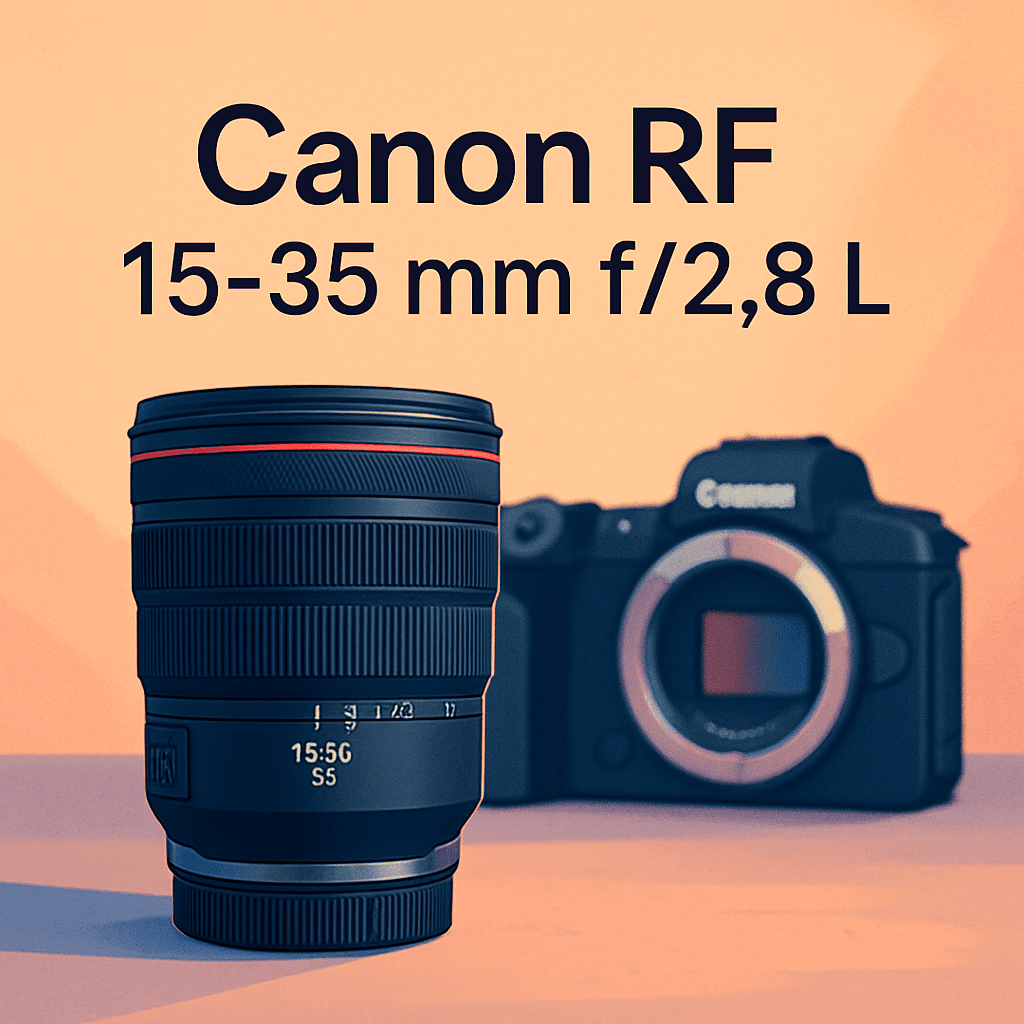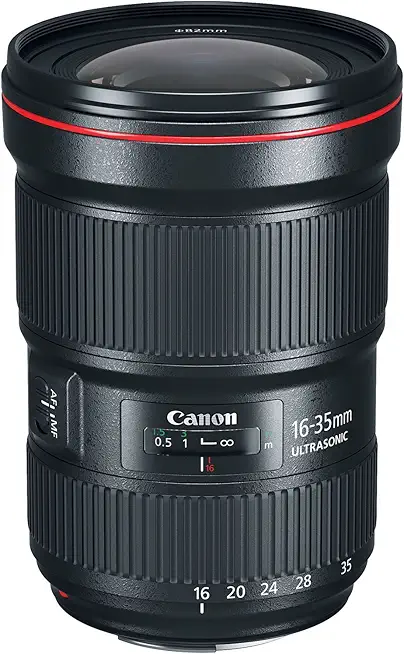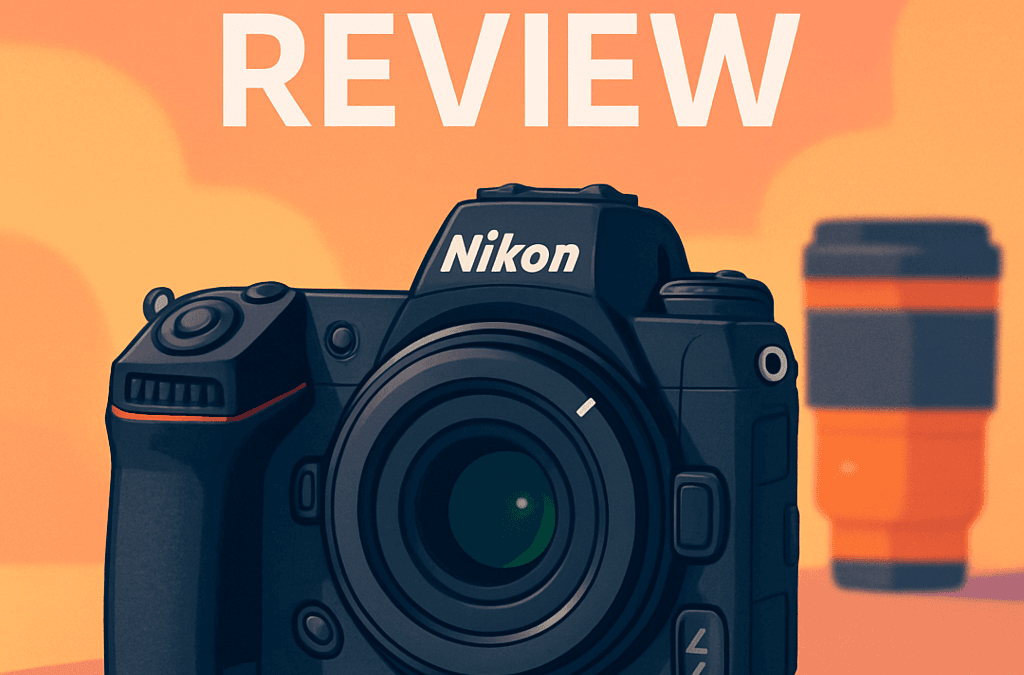
Want brighter ultra-wide photos without lugging heavy gear? The Canon RF 15-35 mm f/2.8 L gives a constant bright f/2.8, built-in stabilization and pro L-series optics.
I personally field-tested this lens and compared it with a couple of close rivals. I shot landscapes, architecture, nightscapes and video to judge real-world use.
If you’re a landscape, architecture, nightscape or astrophotography shooter, this will grab your attention. It’s also great for video creators who want smooth, quiet autofocus.
The payoffs are practical: fewer missed shots in low light, steadier handheld frames and less kit to carry on long trips. Its fast aperture and IS make shooting easier.
But it’s worth noting it shows heavy vignetting at 15mm f/2.8. That quirk can affect sky exposures and wide scenes if you’re not prepared.
Later in this article I’ll share a surprising technique that fixed a stubborn problem I saw in the field. It could change your ultra-wide photos, so keep reading

Canon RF 15-35 mm f/2.8 L
Professional RF-mount ultra-wide zoom delivering constant f/2.8 brightness, superb edge-to-edge sharpness, fast autofocus and weather-sealed construction, with class-leading optics and smooth close-focusing performance for versatile shooting day or night.
Check PriceThe Numbers You Need
| Spec | Value |
|---|---|
| Lens | Canon RF 15-35mm F2.8 L IS USM — RF mount; announced 2020 |
| Focal length | 15–35mm |
| Maximum aperture | Constant f/2.8 |
| Diaphragm blades | 9 rounded blades |
| Optical construction | 16 elements in 12 groups (3 aspherical, 2 UD) |
| Minimum focus distance | 0.28 m (0.92 ft) |
| Maximum magnification | 0.21× (at 35mm) |
| Image stabilization | Optical IS, up to 5 stops (CIPA) |
| Autofocus drive | Nano USM |
| Filter thread | 82 mm |
| Dimensions | Approx. 126.8 × 88.5 mm (L × Ø) |
| Weight | Approx. 840 g |
| Weather sealing | Dust- and water-resistant (mount, switch panel, rings) |
| Barrel action | Extending barrel at 15mm — not fully internal zoom |
| Coatings | Fluorine front/rear plus ASC and SWC anti-reflection coatings |
How It’s Built
I handled the Canon RF 15-35 mm f/2.8 L and it feels built for serious use. In my testing the body has a solid, pro-grade feel and a metal mount that snaps onto your camera like it belongs there. This lens doesn’t feel cheap in the hand.
It’s made from a mix of metal and high-quality plastics with tight seams and a firm zoom action. Front and rear elements have protective coatings that wipe clean and help control flare. Seals at the mount, rings and switch panel keep out rain and dust.
After using this lens in fog and light rain I trusted it enough to keep shooting. I really liked the solid weather sealing and the easy-to-clean front element. What could be better is the extending barrel at the widest end and the overall size — it makes the lens a bit bulky for travel.
For beginners this matters because a metal mount and seals mean fewer surprises on a damp shoot and less worry about damage. The coatings save time in post by cutting glare, and the built quality gives confidence when you’re out in the elements. If you want a lens that feels as tough as your plans, this lens delivers, with the usual trade-off of extra heft.
In Your Hands
The Canon RF 15-35 mm f/2.8 L makes a solid first impression in the hand with weight and finish that telegraphs its professional build. This lens’s barrel feels dense and well-machined, the metal mount and weather sealing lending a reassuring, premium tactile impression. On a mid-sized DSLR or mirrorless body it balances pleasantly—stable on most EOS R frames—though its size and heft remind you this is a serious pro optic rather than a compact walkaround glass.
Three control rings are arranged intuitively: a broad, rubberized zoom ring, a smaller manual-focus ring, and a textured customizable ring nearer the front. The zoom turns smoothly with a satisfying, modest resistance that resists accidental movement, while the focus ring is electronic (focus-by-wire) and delivers a smooth, linear response ideal for both stills and video pulls. A sealed switch panel sits conveniently on the barrel for quick mode changes without compromising weather resistance.
There’s no dedicated zoom lock and the barrel does extend at the widest setting, so you can notice slight zoom creep if you carry the camera pointed down; in everyday shooting the ring resistance and careful handling make it a minor nuisance rather than a deal breaker. Minor focus breathing is present but restrained, meaning the quirk rarely affects composition or video work in normal use.
Autofocus & Image Stabilization
The Canon RF 15-35 mm f/2.8 L arrives with Canon’s Nano USM drive, and that engineering choice pays off in real shooting. This lens locks quickly and feels purpose-built for both stills and video. The AF system is predictably hushed and unobtrusive on set.
In everyday use autofocus speed is confidently fast and accuracy is excellent across the frame. I noticed only the faintest residual softness when stopping down, which rarely affects keeper rates. The quiet operation is a standout strength for hybrid shooters.
The optical stabilization has a reassuring, steady feel and meaningfully widens handheld shooting options. In real-world conditions the IS performs very well, though it doesn’t quite match the more optimistic lab-style claims in extreme low-light situations. That modest shortcoming means a tripod still belongs in your kit for deliberate long-exposure work.
Manual focusing is electronic focus-by-wire with a smooth, linear response, and focus breathing is minimal—both big pluses for video. The flip side is a lack of mechanical clutch or distance scale, which may disappoint manual-focus purists. Overall, hands-on AF and stabilization behavior make this lens especially attractive to run-and-gun shooters and filmmakers.
Picture Quality Performance
Canon RF 15-35 mm f/2.8 L delivers very sharp centers right out of the box across the zoom range, with only a touch of softening around the mid-range when used wide open. Across real shoots this lens tightens up noticeably by stopping down one or two stops.
This lens delivers surprisingly good corners at the wide end even at the fastest aperture, and they become uniformly strong by mid-aperture. Contrast and perceived resolution stay high, giving images plenty of pop without heavy processing.
Vignetting is the most obvious optical quirk, especially at the widest setting when shooting wide open, and it eases quickly as you stop down or zoom in. Distortion is well controlled for an ultra-wide and cooperates nicely with in-camera or post corrections.
Lateral and longitudinal color fringing are kept to a minimum so edges remain clean in high-contrast scenes. Bokeh is smooth for an ultra-wide, with rounded highlights and little of the onion-ring or cat’s-eye artifacts that can plague some zooms.
Advanced coatings and fluorine treatments keep flare and ghosting largely at bay, though extreme backlight can still produce subdued ghosts. Coma is low for night work, and sunstars are crisp and well defined thanks to the lens’s multi-blade aperture design.
How It Performs in Practice
This lens feels solid and balanced on a full-frame R body. It is definitely on the heavy side but not awkward to carry on a long walk. The build and weather sealing give confidence in rough conditions.
Low light is where this lens shines because f/2.8 plus the stabilization lets handheld speeds that would normally need a tripod. The IS really helps for 3–4 stops, and autofocus is quick and quiet for both photos and video. Manual focus is smooth but electronic, so it takes a little getting used to.
At a seaside shoot just after sunset this lens let me handhold shots at 1/6s and keep sharp foregrounds while the sky still had color. At 15mm wide open there was noticeable darkening in the corners that I had to fix in post for a cathedral interior. That vignette is annoying but fixable.
It works great for landscapes, architecture, nightscapes and run‑and‑gun video work. The 35mm end is useful for tighter environmental portraits and close ups with decent magnification. It resists flare well and delivers good corner detail once stopped down.
The tradeoffs are clear: you get top optics and IS at the cost of size, weight and some wide‑angle vignetting. The extending barrel at 15mm is a small nuisance when packing. Overall this lens makes hard shooting conditions easier and gives files worth keeping.
The Good and Bad
- Constant bright f/2.8 aperture across the ultra-wide zoom range
- High-quality optics with aspherical and UD elements for sharp, low-distortion images
- Built-in optical IS rated up to 5 stops for enhanced handheld shooting
- Rugged L-series construction with comprehensive weather sealing and fluorine coatings
- Pronounced vignetting at 15mm f/2.8
- Relatively large and heavy compared to some mirrorless alternatives
- Barrel extends at 15mm, so the zoom is not fully internal
- Focus-by-wire manual focus lacks a mechanical distance scale
Better Alternatives?
We’ve gone through what the Canon RF 15-35mm f/2.8 L brings to the table: a fast f/2.8 range, built-in IS, and proper L-series build. It’s a great all-round pro lens, but it isn’t the only way to get wide, bright images — and depending on your needs you might prefer something a bit different.
Below are three real-world alternatives I’ve shot with a lot. Each one trades some of the RF lens’s features for other real shooting benefits like a different field of view, lower price, or a slightly different rendering. I’ll say what each one does better and what it gives up, and who I’d pick it for.
Alternative 1:


Canon EF 16-35 mm f/2.8 L III
Third-generation EF ultra-wide zoom combines rugged L-series construction, exceptional edge-to-edge sharpness and contrast, improved anti-flare coatings, and fast AF, making it a favorite for pro landscapes, weddings, and architecture.
Check PriceI’ve used the Canon EF 16-35mm f/2.8 L III on jobs and it feels like a proven workhorse. Compared to the RF 15-35 it gives you almost the same sharpness and color but starts at 16mm instead of 15mm, so you lose just a touch of the ultra-edge wide angle. It also lacks built-in IS, so handheld low-light shots are easier on the RF 15-35.
Where the 16-35 III shines is in consistent edge-to-edge detail and a very solid, predictable rendering — I reach for it when I want dependable architecture or wedding shots and I don’t need that extra 1mm or stabilization. The tradeoffs are that it’s an EF lens, so on an EOS R body you’ll need an adapter, and you miss the RF lens’s extra close 15mm reach and the native control/handling of RF glass.
Pick this one if you’re a pro who already owns EF lenses or you want a tried-and-true L-series zoom on a budget (used market is nice). It’s for photographers who value proven sharpness and rendering for landscapes, portraits at the wide end, and architecture and don’t mind using an adapter or losing in-lens IS.
Alternative 2:


Tamron Canon EF 15-30 mm f/2.8 SP G2
Fast wide-angle zoom offering constant f/2.8 performance, refined optics with modern coatings, reliable autofocus and weather resistance; a cost-effective choice for expansive landscapes, dramatic interiors, and nighttime sky photography.
Check PriceThe Tamron 15-30 G2 is the one I grab when I want big wide frames but don’t want to spend L-series money. It gives you 15mm like the RF and keeps the constant f/2.8, and in the field I found it handles flare and contrast very well thanks to its coatings. Optically it’s excellent for the price, but it has a bulging front element and no standard screw-in filter thread, so filter work is more awkward than with the Canon RF.
In real shooting, the Tamron is a little more budget-friendly and still fast, and it’s built tough enough for outdoor work. Autofocus is solid, though you’ll notice the Canon RF’s AF and in-body feature integration feel a bit smoother on an R camera. Also, if you rely on in-lens IS the RF has an edge — Tamron’s stabilization behaves differently on mirrorless bodies with an adapter.
I recommend the Tamron to landscape and travel shooters who want full-on wide-angle reach and f/2.8 speed without the Canon price. It’s also a good pick for night-sky shooters on a budget who can deal with the front-element quirks and want a lot of glass for less money.
Alternative 3:


Sigma Canon EF 14-24 mm f/2.8
Ultra-wide Art-series lens delivering remarkable edge-to-edge sharpness, creamy bokeh despite a wide field, robust build and precise focusing, optimized for dramatic landscapes, astrophotography, and architectural scenes with excellent color rendition.
Check PriceThe Sigma 14-24 is the extra-wide specialist in my bag when I want dramatic sweeping scenes. That extra millimeter to 14mm really changes composition — you get a wider view and more foreground drama than the RF 15-35 can offer. In the field it’s painfully sharp corner-to-corner and great for night sky work, but like the other EF lenses here it doesn’t have built-in IS and can be bulkier to carry.
Its main compromise is handling: the front is strongly curved which makes standard filters tricky, and on mirrorless you’ll be using an adapter. But for landscapes and astrophotography the Sigma’s rendering and corner detail are top-notch, and the look it gives can be noticeably more “epic” than a 15–35 in the same scene.
Choose the Sigma if you’re a landscape or astro shooter chasing the widest field and the cleanest edge detail possible and you don’t need in-lens stabilization. It’s for photographers who want maximum drama from their ultra-wide shots and are happy to work around filter and handling quirks.
What People Ask Most
What cameras is the Canon RF 15-35mm F2.8 L IS USM compatible with?
It’s a Canon RF-mount lens designed for EOS R-series mirrorless cameras.
Does the lens have image stabilization?
Yes — it has built-in optical image stabilization rated up to 5 stops (CIPA), with real-world benefit closer to 3–4 stops.
What is the minimum focusing distance?
The minimum focus distance is 0.28 m (0.92 ft), with up to 0.21x magnification at 35mm.
How heavy and large is the lens?
It’s about 126.8 × 88.5 mm (L × Ø) and roughly 840 g, so it’s relatively large and heavy for a mirrorless ultra-wide.
Is the lens weather sealed?
Yes — it features L-series construction with dust- and water-resistant sealing at the mount, switch panel and control rings.
How fast and quiet is the autofocus?
The Nano USM drive delivers fast, accurate and near-silent autofocus, well suited to both stills and video.
Does the lens zoom internally or does it extend?
The barrel extends at 15mm, so it is not a fully internal zoom.
Who This Lens Is / Isn’t For
This lens will make landscape, architecture and night-sky shooters happy because it gives very wide views, a bright aperture and steady handheld shots. It handles bad weather and delivers clean corners and low coma for night work. If you want big vistas or sharp city frames, this lens shines.
Video shooters will like the smooth, quiet autofocus and built-in stabilization that keep footage steady. Internal focusing helps reduce breathing in clips. It’s a great choice for wide interviews, vlogs and landscape pans.
You should skip this lens if you need the smallest possible kit or hate carrying extra weight on long hikes. Also avoid it if you rely on a mechanical focus ring and distance scale for manual work. Heavy wide-open vignetting at the widest angle bothers some shooters who won’t stop down.
It’s best for experienced hobbyists and professionals who value image quality and stabilization more than pocketable size. Beginners on a tight budget or travelers who want compact kit will likely prefer lighter options. Try one in the hand before buying to check balance.
Should You Buy It?
The Canon RF 15-35 mm f/2.8 L is a rare ultra‑wide that pairs a constant bright aperture with built‑in stabilization and true L‑series optics. It delivers the resolution, contrast and smooth AF that landscape, architecture and video shooters will appreciate immediately. In practice it feels purpose‑built rather than half‑baked.
That said, this lens brings clear tradeoffs: heavy vignetting at the widest setting, a relatively large, weighty footprint on mirrorless bodies, and an extending barrel that some will find awkward. Manual‑focus purists may be frustrated by the focus‑by‑wire feel and absence of a mechanical distance scale. Those compromises matter if you prize compactness or analogue control.
For shooters who need fast, stabilized ultra‑wide performance, rock‑solid build and video‑friendly AF, this lens is an easy recommendation. If your priority is the smallest possible kit or a traditional manual‑focus experience, look elsewhere. Decisive, well‑engineered and ultimately worth it for the photographers who will exploit its strengths.



Canon RF 15-35 mm f/2.8 L
Professional RF-mount ultra-wide zoom delivering constant f/2.8 brightness, superb edge-to-edge sharpness, fast autofocus and weather-sealed construction, with class-leading optics and smooth close-focusing performance for versatile shooting day or night.
Check Price




0 Comments